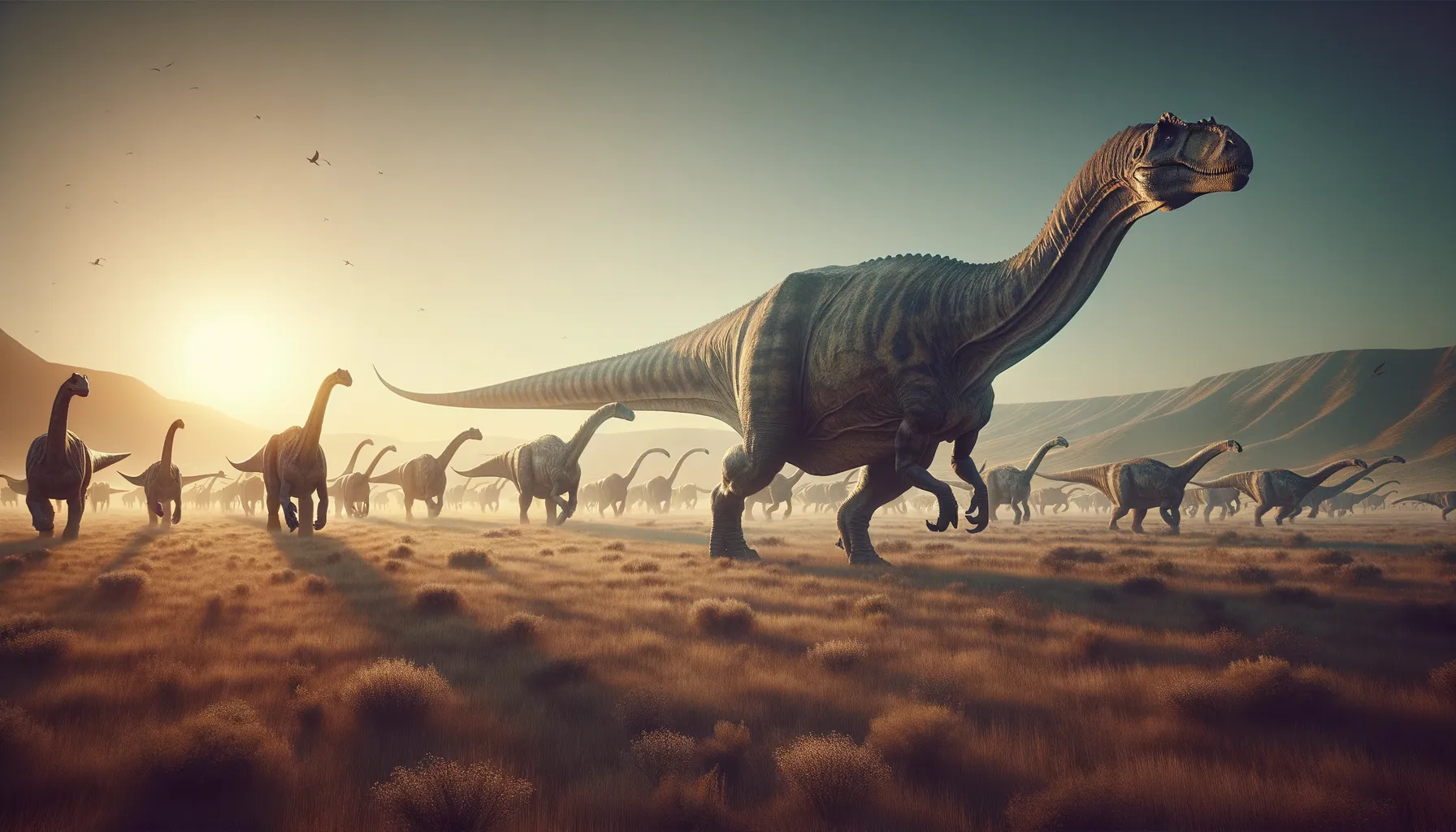
Nurosaurus
Majestic giant of the Jurassic world.
Period
Jurassic
Length
Stretched to about 25 meters long.
Height
Reached up to 15 meters tall.
Weight
Weighed around 30,000 kilograms.
Nurosaurus was a massive herbivorous dinosaur that roamed the Earth during the Jurassic period. Known for its enormous size and long neck, it was among the larger sauropods, moving in herds across vast open plains. Its primary defenses against predators included its massive tail and imposing size, which deterred most major carnivores. The discovery of Nurosaurus has helped scientists to better understand the ecosystem dynamics of its time.
Diet
Nurosaurus fed primarily on plant material, relying on its long neck to reach high vegetation. It consumed large quantities of leaves, branches, and soft plants each day to sustain its massive size.
Hunting
As a herbivore, Nurosaurus did not hunt other animals but grazed on ancient ferns and trees. Its feeding behavior was likely deliberate and slow, using its bulk to push against trees to knock loose leaves.
Environmental challenges
Nurosaurus faced the challenge of finding sufficient food to support its enormous size, particularly in times of drought or environmental changes. Predators, though less likely to attack fully grown individuals, posed a threat to younger or weaker members of their herd. Changes in flora and possible natural disasters also tested their adaptability over time.
Speed
Moved at a relatively slow pace, typical of large herbivores.
Lifespan
Lived for several decades, typical of large dinosaurs.
First discovery
Discovered in the 1990s in the Junggar Basin of China.
Fun Facts
- Nurosaurus was discovered in the Gobi Desert of Mongolia, a treasure trove for dinosaur enthusiasts.
- This dinosaur had a unique long neck, allowing it to reach high foliage for food, similar to modern-day giraffes.
- Nurosaurus was a herbivore, meaning it primarily fed on plants and used its long neck to browse from the treetops.
- It lived during the Late Jurassic period, a time when many large dinosaurs roamed the Earth.
- Fossils of Nurosaurus help scientists understand the diverse ecosystems that existed millions of years ago.
- Nurosaurus is believed to have been around 25 meters long, making it one of the largest dinosaurs ever discovered in Asia.
Growth and Development
Nurosaurus experienced steady growth throughout its life, reaching enormous sizes by adulthood. Juveniles were more vulnerable, depending on the herd for protection during their development. Rapid growth spurts likely occurred during the early years when food was abundant.
Habitat
Nurosaurus thrived in lush, open plains and forested areas with plenty of vegetation. It migrated over long distances to find food and water, which was crucial during dry seasons. Its habitat was shared with other large herbivores and a few fierce carnivores.
Interaction with other species
Nurosaurus coexisted with various dinosaur species, primarily engaging in non-hostile interactions. With its size advantage, it had few natural enemies among herbivores but had to remain vigilant against possible predators. It likely competed indirectly with other herbivorous dinosaurs for food.
Natural lifespan
Nurosaurus naturally lived several decades, mirroring the lifespan of most large dinosaurs.
Reproduction
Nurosaurus reproduced by laying eggs in secure, hidden nests. Parental care might have been minimal, with hatchlings relying on instinct and the protection of the herd. This field remains largely hypothesized based on comparisons with similar dinosaurs.
Social behaviour
Nurosaurus likely traveled in herds, a strategy that provided safety in numbers against predators. Social interactions within the group could have included communication through sound or body language, as well as cooperative behaviors during migration or feeding.
Fossil locations
Fossils of Nurosaurus have primarily been discovered in the Junggar Basin, an area that provides significant insight into the Jurassic ecosystem. These findings have contributed to the understanding of sauropod distribution across prehistoric China.
